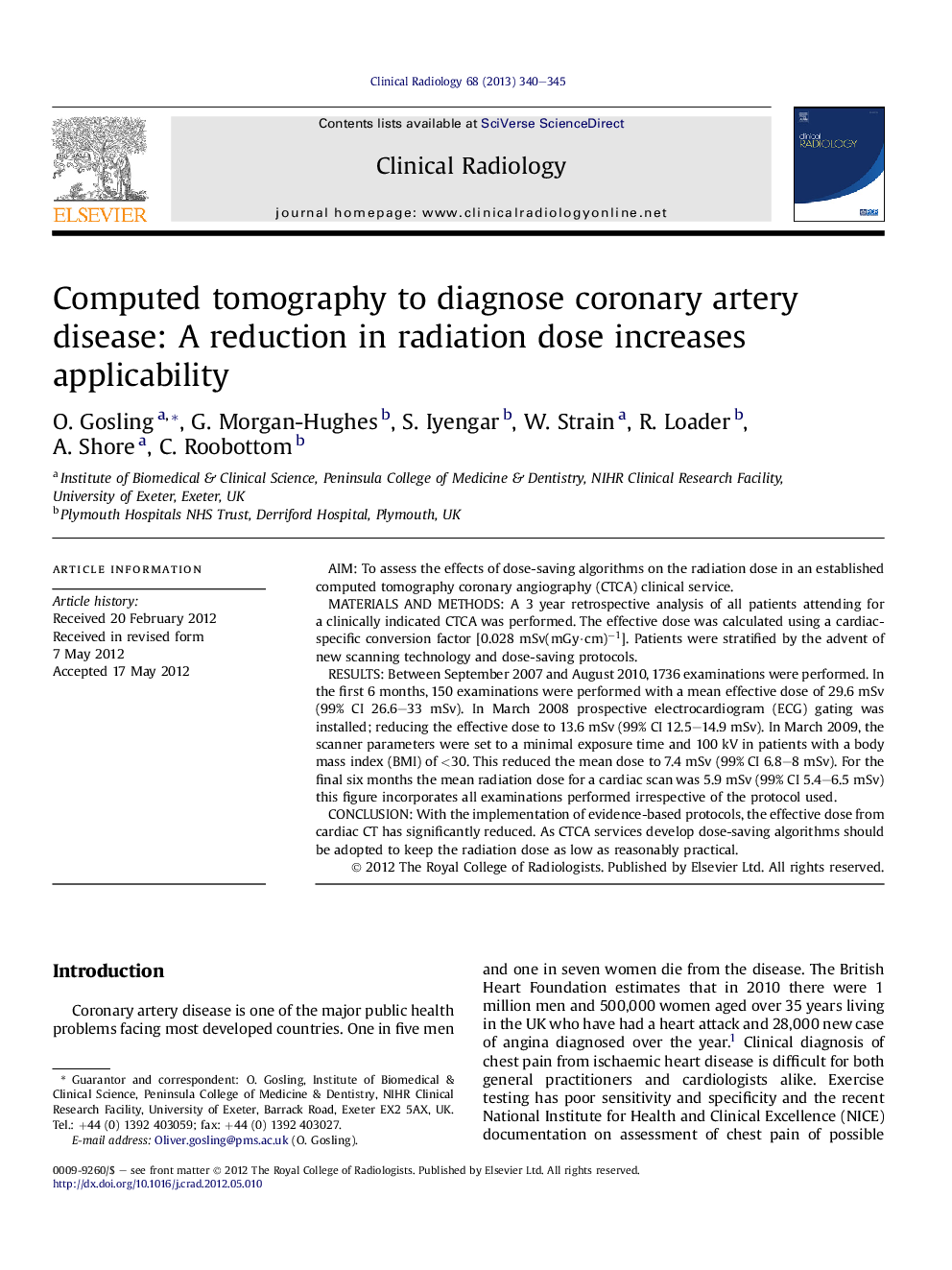| Article ID | Journal | Published Year | Pages | File Type |
|---|---|---|---|---|
| 3981598 | Clinical Radiology | 2013 | 6 Pages |
AimTo assess the effects of dose-saving algorithms on the radiation dose in an established computed tomography coronary angiography (CTCA) clinical service.Materials and methodsA 3 year retrospective analysis of all patients attending for a clinically indicated CTCA was performed. The effective dose was calculated using a cardiac-specific conversion factor [0.028 mSv(mGy·cm)−1]. Patients were stratified by the advent of new scanning technology and dose-saving protocols.ResultsBetween September 2007 and August 2010, 1736 examinations were performed. In the first 6 months, 150 examinations were performed with a mean effective dose of 29.6 mSv (99% CI 26.6–33 mSv). In March 2008 prospective electrocardiogram (ECG) gating was installed; reducing the effective dose to 13.6 mSv (99% CI 12.5–14.9 mSv). In March 2009, the scanner parameters were set to a minimal exposure time and 100 kV in patients with a body mass index (BMI) of <30. This reduced the mean dose to 7.4 mSv (99% CI 6.8–8 mSv). For the final six months the mean radiation dose for a cardiac scan was 5.9 mSv (99% CI 5.4–6.5 mSv) this figure incorporates all examinations performed irrespective of the protocol used.ConclusionWith the implementation of evidence-based protocols, the effective dose from cardiac CT has significantly reduced. As CTCA services develop dose-saving algorithms should be adopted to keep the radiation dose as low as reasonably practical.
